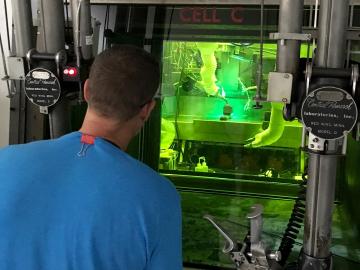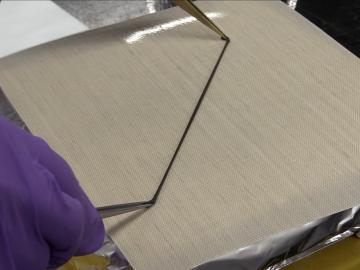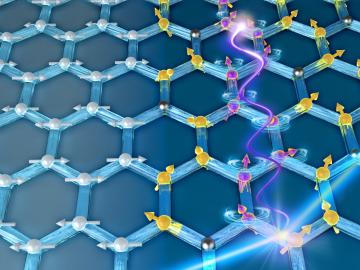
Filter News
Area of Research
- (-) Building Technologies (2)
- (-) Materials (52)
- (-) Nuclear Science and Technology (14)
- Advanced Manufacturing (2)
- Biological Systems (2)
- Biology and Environment (4)
- Clean Energy (48)
- Climate and Environmental Systems (2)
- Computational Biology (1)
- Energy Frontier Research Centers (1)
- Fossil Energy (1)
- Fuel Cycle Science and Technology (1)
- Fusion Energy (1)
- National Security (2)
- Neutron Science (26)
- Nuclear Systems Modeling, Simulation and Validation (1)
- Sensors and Controls (2)
- Supercomputing (23)
News Topics
- 3-D Printing/Advanced Manufacturing (3)
- Advanced Reactors (1)
- Bioenergy (1)
- Biomedical (3)
- Composites (2)
- Computer Science (2)
- Energy Storage (1)
- Fusion (1)
- Grid (1)
- Isotopes (5)
- Materials Science (7)
- Microscopy (4)
- Molten Salt (3)
- Nanotechnology (6)
- Neutron Science (4)
- Nuclear Energy (5)
- Physics (4)
- Polymers (3)
- Space Exploration (1)
- Transportation (1)
Media Contacts

Scientists of the Department of Energy’s Light Water Reactor Sustainability Program (LWRS) and partners from the Electric Power Research Institute (EPRI) have conducted the first weld tests to repair highly irradiated materials at DOE’s Oak Ridge National Laboratory.

A novel method developed at Oak Ridge National Laboratory creates supertough renewable plastic with improved manufacturability. Working with polylactic acid, a biobased plastic often used in packaging, textiles, biomedical implants and 3D printing, the research team added tiny amo...


A novel approach that creates a renewable, leathery material—programmed to remember its shape—may offer a low-cost alternative to conventional conductors for applications in sensors and robotics. To make the bio-based, shape-memory material, Oak Ridge National Laboratory scientists streamlined a solvent-free process that mixes rubber with lignin—the by-product of woody plants used to make biofuels.



